Interview conducted and written by Michael Auliso and republished here with his permission.
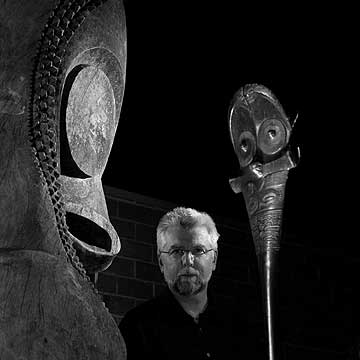
Joel Cooner
TM: How did you begin selling Tribal Art?
After graduating from college in 1975 I took a few months off to travel in Europe. Deciding to continue my travels without returning home, I began leading camping tours through Europe and North African, which ended in the overland trip to Asia. Two months had turned into four years later! After extensive adventures in Europe, North Africa, the Middle East, Southeast Asia and Japan I returned to the states in November of 1979 with a cache of collected merchandise such as Tibetan rugs, Nepalese and Indonesian jewelry, Japanese Kimono and Obi, Chinese Silver and artifacts.
TM: Did you want to return to the States?
I learned that my grandmother was dying, so I was just going to come back for a visit and sell some of my things. I had a real life in Tokyo. I was modeling, doing television, commercials, teaching English, and playing three cord country music in the subways of Shinjuku. I was called “The Shinjuku Kid” and was making between $50-$300 a night playing for 45 minutes.
When I came back my father arranged an exhibition in a small boutique gallery in Little Rock Arkansas. That opening night we had a fun party and everybody oohed and aahed and thought the stuff was great. Of course nobody bought anything but they all thought it was pretty incredible. Later that night I got a phone call at three o’clock in the morning saying that the gallery had been robbed and burned to the ground! Everything was gone which was kind of… (pause) just okay for an “Asia-phile” who had just been traveling through India, Nepal, Afghanistan and Indonesia.
I just sort of took it as a new direction in life. All the tragedies in my life have been open windows for a better future. Every time something has happened to me that was shocking or jarring where I lost everything it always opened a new door and I’ve grown to trust that. So whenever I find myself in a setback situation I stop and think about where I am and where my opportunities are. When everything is going great and your system is working that’s the time to look for a change, that’s the time to “shake it up” and look for new options and directions because anything that works after a while gets stale. It is better to be planning your next move while you’re on top than when you’re all of a sudden in a hole.
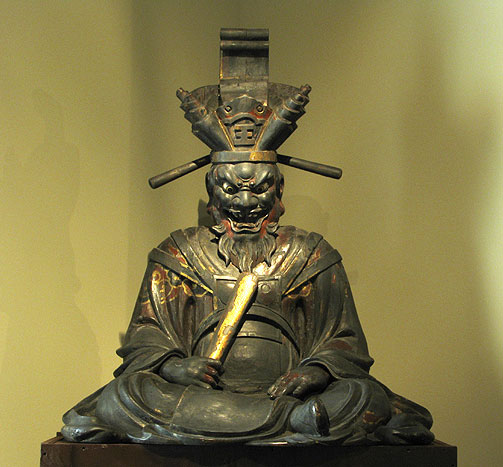
17th C. Japanese Shinto Shrine Figure Depicting Chief Magistrate of the Afterlife “Emma-O”. Recently sold to the Dallas Fine Art Museum
On my first road trip to find customers I met Dan Cook in Dallas who convinced me to come work as his assistant. We later became partners in “Rudi South Inc”. and to this day remain close friends. It was through Dan’s tutelage that I made the transition from traveler/ adventurer to merchant. I also learned from Dan to never be content with a successful status quo but to continue to keep things refreshed. He referred to this as the great “shake it up”.
In the late 1980’s Dan and I dissolved our partnership. I dealt privately for a few years from my home until the birth of my son which prompted me to purchase my first gallery on Dragon Street. The Chinese say that “a child is born with a loaf of bread under each arm”. It was this added responsibility that ushered the realization that owning your gallery is a dealers best long term security and retirement vehicle.
TM: You’ve been in the business how many years now?
I just started yesterday (smiling). Its funny how I used to feel like I was the youngest guy in this business and then all of a sudden people started opening doors for me and calling me “sir” and I realized a long time has past. You go from being a young buck in this business to being an “old fart” real quick. I still feel like a new comer since there’s no end to the information, there’s no end to the knowledge and this is what keeps us going until we die. Nobody has the perfect eye or all the information, and that’s exciting; you get these little mini-enlightenments and all of a sudden you get it! There will be something new that you didn’t really pay attention to and all of a sudden “bing” you get it and then you’re off on a new tangent for a while until you’ve mastered it and had some fun then you move onto something else.
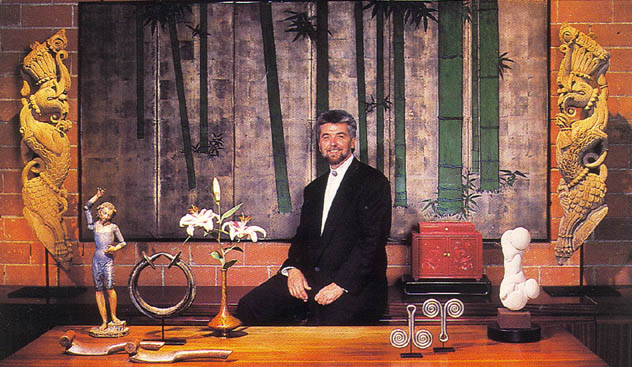
The earlier years, Joel featured in an Art Magazine in the 1980’s
TM: In 2006 you purchased and remodeled this massive gallery right next to your first one. Why did you need one so HUGE?
Because I can! At this point the rent from the first gallery pays the mortgage on the second one. I have an eclectic collection selling sculpture, furniture, textiles, jewelry, etc. I enjoy developing complete rooms in my gallery which helps the client to visualize the art work in their homes. I believe it is easy to mix different cultures and styles. The trick is to simply keep the quality consistent. My gallery is twice the size of my home. I spent most of my waking hours at work therefore I like to be comfortable. The gallery has a full kitchen and dining area and is prefect for entertaining. I believe it is important for the client to not only be purchasing a nice piece but retain an enjoyable memory of the event.
TM: Do you find being in the Dallas design district among other art galleries gives you access to customers most dealers don’t have?
My clients range from museums, dealers to collectors to interior designers. A collector will normally purchase one object at a time. A designer can fill a whole room. My favorite clients are dealers since they know quality and values and never run out of room for that next piece.
TM: Can you describe your aesthetic? What qualities must and object have for you to buy it?
I’m probably best known for my love of form. If you fall in love with a pure form in the beginning you will rarely get tired of it. I like my Oreo’s plain without the creamy center. I’m most influenced by the Japanese aesthetic. I like simple and restrained elegance but then again I never say never.
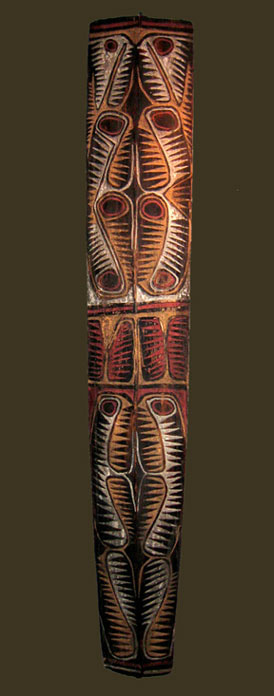
New Guinea May River Shield
TM: You sell a a broad multi-cultural mix of material ranging from contemporary sculpture to Japanese and Northwest Coast. Why do you think you’ve had such success being diverse when other dealers struggle to branch out from one culture or genre?
Honestly every field has its down time and we’re all out there looking for good pieces. So there are times when African Art becomes too expensive, good Japanese might be scarce, so I can always jump from one area to another. I never lock myself into only buying tribal or only buying Asian. I buy contemporary art and photography and I love selling them. I really find I’m looking for what turns myself on. If I find something beautiful it will mix with anything else I have and that opens up a whole clientele to me. I find that if you have a house or gallery full of material from one area it becomes overwhelming, its dull, its boring. I really like an eclectic mix in my life, in my home and in my gallery. I like to have something for everybody.
I really feel for these people who for example sell only American Indian and they are all out there wrestling for the same pieces. It is smart to be eclectic and I think one thing feeds another. In tribal art I’m known as a form dealer but it is really through a love of Contemporary Art that I try and find the commonality between the primitive art like Primitivism in 20th Century Art. I favor that contemporary painting collector or contemporary sculpture collector who ends up in my gallery and sees they can soften the hard edge of their collection with some historic piece from the tribal or Asian world. Aesthetically it blends perfectly because actually one influenced the other. Of course to the contemporary collector, they are used to spending much more money than the tribal collector is. Usually the price of Tribal Art only amounts to the tax on a great Picasso or Miro.
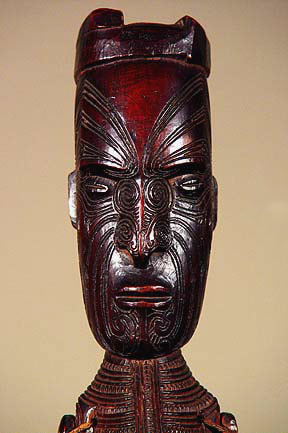
A 19th C. Maori Marionette, New Zealand
TM: Your booth at the shows often is the best designed. Where do you feel your sensitively to art comes from? Has your facility for design always come natural to you?
No, it really doesn’t. It is just doing the work over and over again. I’ve always had a large gallery so I’ve had a lot of experience placing material. I’ve made all the mistakes twice and I’m stupid sometimes but I won’t make them three times. After a while you just sort of learn that there are certain mathematical equations and systems and elements of balance in symmetry and asymmetry that you can play with. In certain circumstances symmetry is a must and in others, if you can get away from it, asymmetry is the best. If you put a lot of material into a small space you have to start with symmetry. Basically you build a room like you would paint a painting with color. Its truly about balancing.
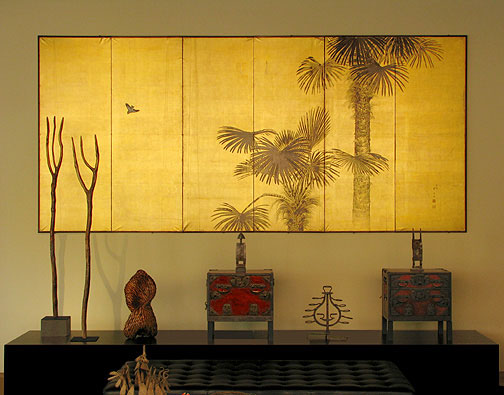
Japanese Shuro Palm Screen Scene
TM:What are your thoughts about art as an investment? Is there anything you recommend buying right now which is undervalued?
I still find that antiques and antiquities value for value are so grossly undervalued compared to contemporary art that I see nothing but upside. If you buy quality and best of types, if you can’t afford Picasso or Rembrandt then look at Folk Art. It doesn’t matter what you’re buying, it could be Barbie Dolls. If you buy “quality”, in the long run you’re going to have a collection that people will be interested in seeing no matter what it is. Quality (pieces) appreciate at a much faster rate than “stuff”. Mid line material does appreciate but it takes a lot longer. High quality material is always in demand, people are always looking for the best and if you can find best of types in any field, and you pay fair prices, then you can’t loose.
TM: What advise do you give to new collectors just starting out?
Buy very high quality! When they come into my gallery what I like to get them thinking about is, try this, don’t try to immediately fill your house with art and antiques. Instead, as a couple buy one “great” piece a year that is just a little bit more than you can afford. I say this to young dealers also who are buying and selling inventory. Do this for fifteen years and in that time you’re going to have fifteen great pieces and that is a collection. You can decorate a house with fifteen great things and if you buy good pieces from good dealers at fair prices you will be successful.
Do not shop for bargains, shop for quality and be comfortable paying a fair price for a great object. Now, if you start making a lot of money and can buy more than one piece a year– great. This is for young couples who are just starting out. Invest in a light and put it in the ceiling. In between making the next purchase fill in the gaps with fresh flowers. For $7-$15 you can do individual flowers in single stem vases around your house with low voltage lights on them. I’ve never sold a piece of art that can compete with a fresh flower under a low voltage light.
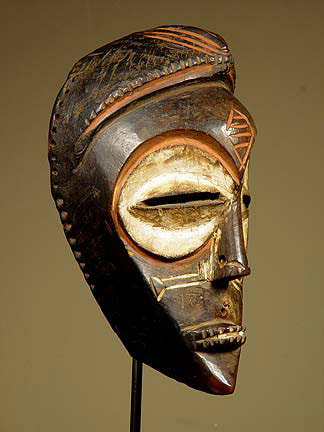
Mbagani Mask, Dem. Rep. of Congo
TM: You seem to be at the zenith of your career. What do you attribute your incredible success to?
I don’t honestly feel that successful. I’m happy that life is good. I’m at a point where the business is feeding me as opposed to me feeding the business. A lot of that has to do with the fact that I’ve killed the overhead monster. My galleries are paid for. Again the income from my old gallery pays the mortgage on my new gallery. I’m not having to struggle to make the monthly ends meet as I used to. He who is without debt is successful. An old antique dealer years ago in Mexico City told me, son “in this business you’ll never have money.” There is always the next piece, you’ll always over invest, you’ll always move up to the next level. In the end it is not about having money and it is all about the dance, the game and enjoying the material. But this is why it is kind of nice to have something in your life which basically generates income without you having to work for it. There are those times like 911 and times when the business stops. You never know, a major war can happen and who’s going to buy art. In that circumstance it is nice to have some security (real estate) that is paying the way.
I feel like I’m just beginning my career. I don’t feel like I’m at the zenith at all. I don’t want to be the biggest and the best. I just want to be comfortable, travel, see my friends, and enjoy the game. I want to search out the material buy it sell it and move onto the next piece. I think it keeps us alive. There are a lot of old art dealers. It keeps their mind fresh always looking for the next piece. You never retire from this business. There is nothing more fun than this. And we come and do these tribal shows and as much of a pain in the ass as they are all of our friends are there. I mean, I see more people at these shows than I see old friends that might live three or four blocks away from me. We are a community.
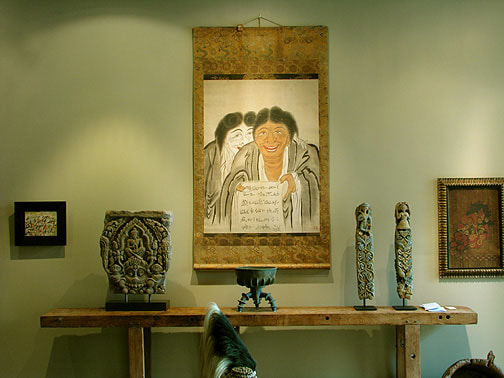
TM: Why do you think people like to buy from you?
I don’t know. Well, I think that people enjoy that I enjoy the material. I look for elegant pieces that are restrained without a lot of gingerbread. I try to find pieces that will stand the test of time. I try to sell pieces to people that they won’t get tired of and can easily upgrade. I think most people develop their clientele to follow their taste. The loyal clientele, when I get new material, come in and basically fall into your look and into your taste.
People like to feel comfortable doing business and need to trust you knowing that you’ll take care of them. It does surprise me sometimes when clients will come to some show and there are a million dealers they can choose from and they still spend all their money with me. It is the highest compliment they can pay, but there is plenty of great material in the room.
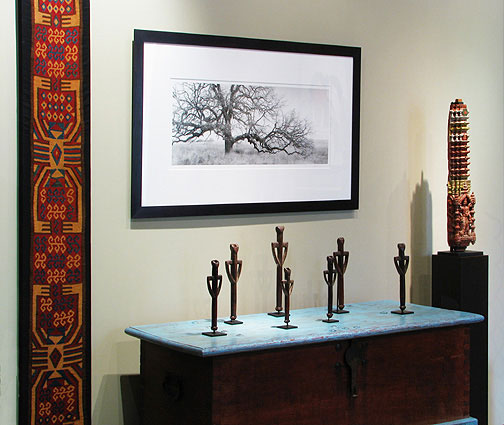
Gallery Scene Featuring a Group of Mossi Flutes below a David Gibson Photo
There is a saying that goes, “choose your dealer before you choose your pieces.” I like this but I don’t think anyone should ever just buy from one dealer. I think they should have several dealers because everybody brings a different aesthetic to the game. Everybody has a different take and you have to trust your heart when it comes to the material. I think the most successful dealers are the ones who stop following everyone else but trust their own taste and develop clients that like their particular taste. My clients that are my long-term devoted clients I take really good care of them. They always get the special price and the extra effort. In fact I will tell them not to buy certain pieces if I don’t think it is consistent with what they have been buying already. If it is not consistent with what I think they are looking for I will actually suggest that they not buy an object.
In the long run you don’t want a client who gets tired of the material. After twenty years you want them to look back and say I like everything I bought from you. When I hear from a client how much they have enjoyed a piece I have sold them, that is the greatest compliment you can give to a dealer. That makes me feel great. I like people who are that sweet and sensitive to give you that information.
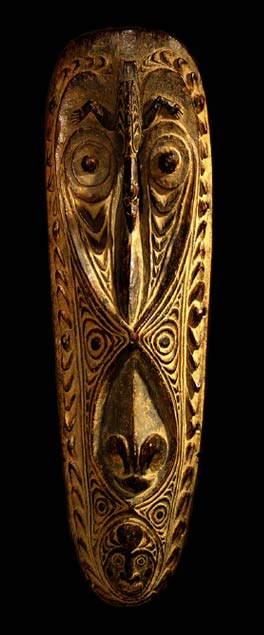
New Guinea Stone-Carved Middle Sepik Drum Finial
TM: How do you arrive at a price for one of those “Best of Type” objects?
We’re all moving throughout the international marketplace and looking at a lot of material. This is where studying contemporary art and prices, knowing the prices in American Indian, Asian and tribal and international values on all these different types of things give you a “gut” fair price. You come up with a feeling for a fair price. If a piece fits into all these different categories you do this summation and average. It is a hard question to answer. A lot of it quite honestly and very simply, has to do with how much you had to pay for it. Early in my career when I was buying a container out of every country in Asia I worked on 300 percent markups. But honestly in the last 10 to 15 years as the price points have become higher and the quality of material has become higher I’m working on 30 percent markups. Then after you give 10 percent to a good client your margin goes down more. I’m at a point in my career where I don’t buy and sell a markup. I see an object that I love and I want to handle it and if I can only make 10 percent on that I’m just as happy. If can make 30 percent I’m more than happy and if I can double my money I’m absolutely thrilled. I’m at the stage really where I don’t need the money like I used to. I don’t have to have the markup but I do enjoy purveying the piece. There are certain pieces that I just want to be the next guy that sells it. I just want to have the pleasure of offering the piece. I’ll see it and immediately envision it in my booth, gallery or home or the house of a client of mine and it is really not about what I’m going to make, its about can I get it and get it to them and make everybody happy. Ultimately in the end a good deals is when everybody wins.
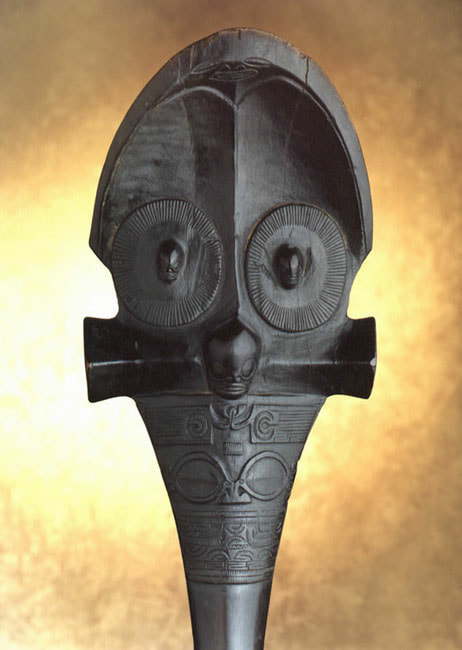
Marquesas Island U’U Club
TM: What’s the greatest collection you’ve purchased?
I don’t buy collections I build collections. I don’t ever think it is a good idea to buy somebody’s else’s collection. You’re buying somebody else’s taste and I think it is better to build a collection with you’re own eyes slowly. I would rather just pay top dollar and pick “the best” out of the collection. A lot of dealers in order to get the top few pieces they buy this whole collection. I’ve never done that. I will just grossly over pay for the top three pieces and be happy with that. In enjoy building collections.
Most people don’t know this about me… actually the first pieces I bought from you were African weapons. You had some very nice quality weapons at your first or second show in Santa Monica. It was actually African weapons form that brought me to African Art. Before that I was more of an Indo-Tibetan dealer who had started to play with Southeast Asian Art. Then I realized that all the great Southeast Asian sculpture was just being bought and sold amongst the dealers and nobody had any real clients. It was not until I got into African Art that I realized there was a much larger market out there and at that point I started selling to museums. So, weapons were a gateway to African sculpture and in the end when it is all said and done I go back to the weapons. I go back to the simple restrained forms.
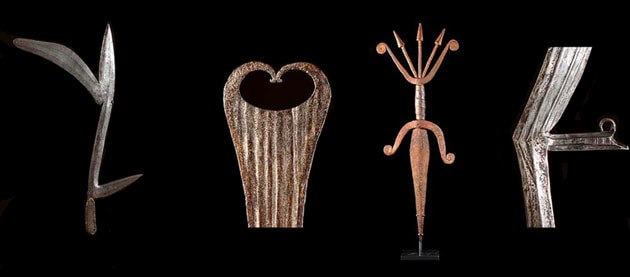
Selection of African Weapons
You know its interesting, I saw a Sotheby’s catalog from the early 1900’s which had African weapons and sculpture in it. An African Weapon or Currency was selling for five times what a Songye figure or Hemba Statue was selling for. You’ve got to remember that back in the time of the colonials these were also more military collections. The statues were pretty much just pagan art. It really wasn’t that interesting and nobody paid much attention to Tribal Art until probably the 1950’s or 60’s in a serious way. Of course I don’t like weapons. I don’t kill things, I don’t hunt and I’m not a sports person but I truly think these 19th century forged forms are beautiful contemporary sculpture. They are antiquity but they fit beautifully into the contemporary world. You can still buy a “best-of-type” in this area for under $5000 and for under $10,000 and surely for under $20,000. I will never be able to afford a best of type Fang figure. It is just beyond where I’ll stretch myself. If I’m spending that money I’ll probably be buying contemporary paintings where I’ll see more upside at that level.
In form I think that simple things like neckrests can be absolutely brilliant pieces of modern art. So there is a lot of what I call the “pots and pans” business… there are a lot of pots and pans which have been disrespected for years.
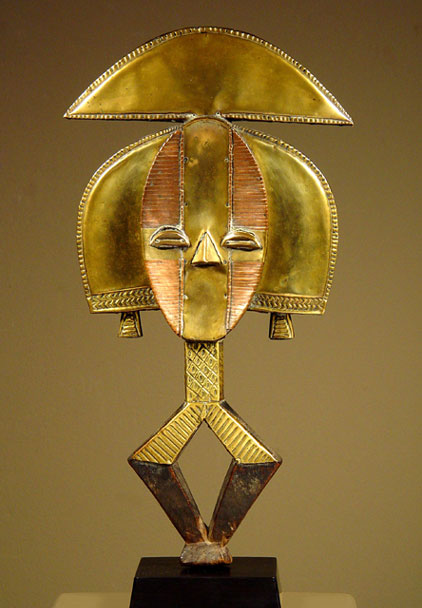
African Kota Reliquary Figure, Gabon
TM: If you could have just one object back that you’ve previously sold, do you know what it would be?
I do, and the answer will surprise you. I sold a contemporary wooden library ladder to the Renwick Gallery at the Smithsonian in Washington D.C. It was made by an artist in Philadelphia, but can’t remember his name. It looked like a large walking beast from “The War of Worlds”. It was a beautiful form and it was in the corner of my living room for several years.
I bought it from Bud Holland in Chicago who was a mentor of mine and an amazing art dealer. When you walked into Bud’s gallery you would see an Edward Ruscha painting that said “boss” or “work” and then you would see a collection of Austrian Viennese furniture followed by a cycladic marble and then an African Sculpture or collection of weapons. Here was a guy that was able to mix all these different sensitivities together; modern art, antiquities, Tribal Art and Viennese furniture. He was truly a master at mixing all of that and making it look fantastic.
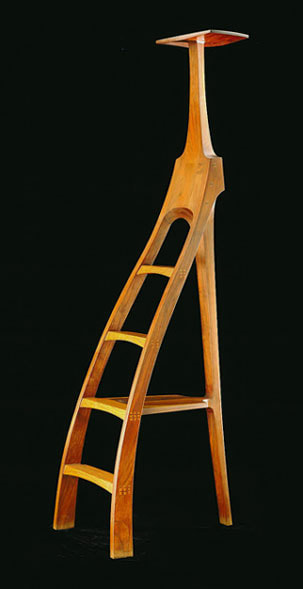
Four Step Library Ladder, Joined a Fabricated Black Walnut and Oak, 78 inches
This ladder was in Bud’s office and when I first saw it I fell absolutely in love with it and asked him if I could buy it. He said, “you know what, everyone has for years wanted to buy that ladder and there is a list but I can’t think of who it is and you’re hear right now. I’m going to let you have it.” So, ultimately somebody working with the Renwick Gallery found out that I had it and contacted me and I sold it. Now it sits there in a niche in the Renwick Gallery in Washington D.C. I do miss that piece, it was a fantastic thing. When you sell to a client there is always the chance you might get a great piece back again. When you sell to a museum its nice to know that the public is going to get to enjoy it and that is the benefit. The tragedy is that you know it is never going to come around and that you’re never going to get another crack at it.
TM: You’ve said Tribal Art is suited to any home. Can you explain? What do you find most appealing about Tribal Art?
Well, it’s Jungian, I mean why did Jung and Freud collect tribal art? It’s very primal and back to the roots, as we know Tribal Art influenced modern and contemporary art. That’s not news but we are just reliving the aesthetics. There is power in Tribal Art, you know. Tribal Art that was made for use has an inner power to it that is strong and undeniable. When its good, its great. Its not “oga buga”, its not meant to scare you its basically meant to bring you closer to the earth, closer to the Gods. What’s really interesting to me about Tribal Art as opposed to other areas where a contemporary painting will sell at a certain price by the inch or Tibetan Thangka has a basic mathematical structure with the proportions being very much the same.
Tribal Art however is unique in that no two pieces are really alike. There are a lot of subtle differences in Tribal Art and the price point of a piece of Tribal Art can change drastically by the tilt of the head, by the torque of the waist. I look for pieces that I call “theater-in-the-round.” The problem with a lot of Tribal sculpture is that it might be beautiful in the front and fall completely flat in the back. But when you find a piece that is in the round beautifully, that to me is an exceptional piece.
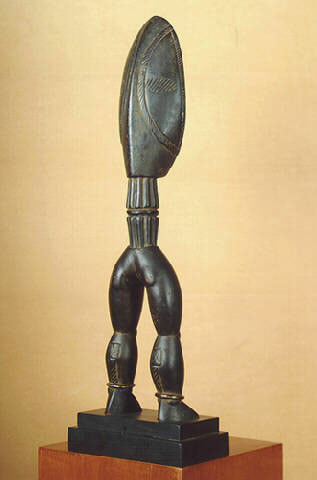
Anthropomorphic Dan Spoon, Ivory Coast
What’s interesting about finding values and coming up with a price, is that if you see something subtle or elegant where the aesthetics in the piece give you a little bit more than the norm, it allows you to ask a little bit more for it. So you can go out there an pay top dollar for a great piece but if you see a little bit more in it than everybody else does, and you can elevate it; there is always an extra dollar in it. The excitement of the hunt is finding the piece in Tribal Art that really does stand out from the rest because its not catholic, no two carvers are alike. Sure, like a Chokwe mask is almost always the same proportions so there is a certain catholic, but within that face it is completely different, the ethos, what’s looking back at you is completely different.
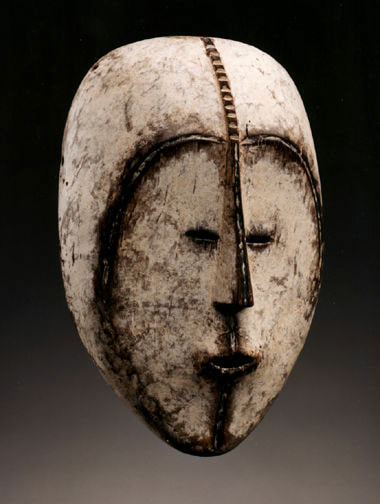
Ngbaka Mask, Dem. Rep. of Congo
TM: What are you thoughts about Art as Investment?
The classic answer is you always buy art because you love it. But personally I think you’re silly, I think you’re stupid if you don’t consider the investment potential or aspect. If you’re going to spend real money I think you need to consider the investment qualities of the piece. If you buy quality you’ll never go wrong. And this is what were taught from the get go to not do; tell your client don’t consider the investment or the upside. I don’t try to sell things for their investment upside but I think the client in his heart should look at it. Again, I tell them if you buy quality you’ll do well. If you just buy stuff or mediocrity there is no telling if anybody is going to be interested in your collection.
You know it is sad to me to see these collectors that have spent huge fortunes always shopping deals, always shopping flea markets, always trying to “best” somebody or always looking to screw some dealer to get stuff cheap. In the end when the spouse dies and puts the collection up for auction nobody will come and buy the material. The collections that do well are the collectors that go out there and pay a fair price for a great object. They always do well.
Some people think Saul Stanoff overpaid for objects but quite honestly he didn’t. He paid fair market value for great objects and in the end he won. I won’t name names but we all know people that have just been bottom feeders. They’ll have 3,275 pieces in their collection and they feel rich because of that, but like I said if they needed to raise money, nobody would come to their party. Nobody wants mediocre things. So the mantra is pay a fair price for great things and you can not go wrong.
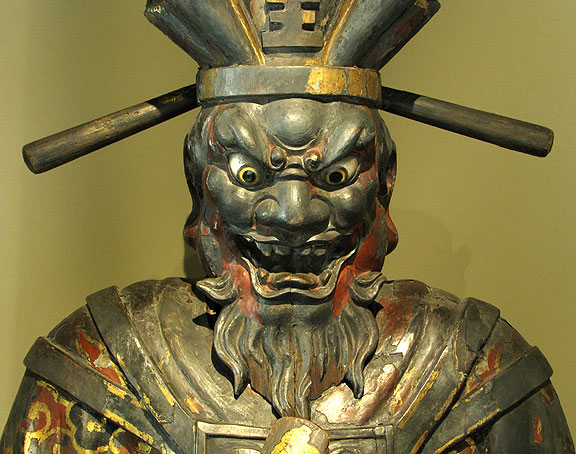
(Close Up) 17th C. Japanese Shinto Shrine Figure Depicting Chief Magistrate of the Afterlife “Emma-O”.
TM: Is there anything you recommend buying right now that is undervalued or undiscovered?
There has been a surge in values in Tribal Art in the last couple of years. I find antiquities and Japanese Art to be undervalued right now. I think that Japanese Zen paintings by known painters are grossly undervalued for what they are but that can change in a heartbeat. Certain aspects of Asian Art are still undervalued especially Japanese material in general. My aesthetic comes from the the Japanese aesthetic. I buy Tribal Art and Modern Art with a Japanese aesthetic. My greatest teachers as far as influences have come from Japan. You know, the way they finish the back of an object and the attention to detail is amazing. When you study Mingei, the restraint, simplicity and the scraping away of the gingerbread is perfection. Relative to Tribal Art, Japanese Art is grossly undervalued.
Since it is getting very hard to find great Tribal things, I think it is time to start looking at the contemporary art in these same traditions. I think there is HUGE upside. I would look at contemporary Asian ceramics or Japanese bamboo sculpture, I think for the money this stuff is great. I’m not talking about things that mimic Tribal Art, I’m talking about the work of contemporary artists in these traditions. I’m less familiar with African contemporary art but there is this Zulu woman named Nesta Nala who makes these beautiful pots which can sell for $20,000-$40,000. Third-world contemporary arts are a fresh and interesting place to look for opportunities.
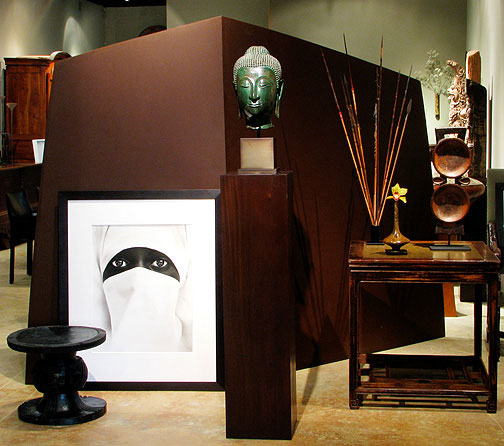
Gallery Scene with Photo of a Muslim Woman
I think photography is grossly undervalued. You know, silver gelatin prints, basic black and white film is “archaic”. In our lifetime we’ve seen the end of photography. It’s all digital now. If you buy quality photography now you can not go wrong. I saw this show of Irving Penn where he had additions of four. He had this photograph of a “cup” which was an addition of four that sold out. The last print sold for $150,000 for a photograph of an Irving Penn Cup! And I have to say it was a fantastic photograph of a cup (laughing). I’m just saying if you can sell a photograph of a cup for $150,000 you better pay attention to this market (still laughing). Irving Penn is a soldier, he’s been around for a long time but it is happening. A young collector can actually collect photography and buy a lot of great classic stuff for $500-$1500 a shot. Photography blends beautifully with any other type of art.
TM: What do you see happening to the market for Tribal Art in the next five to ten years?
In the next five to ten years it is going to continue to blossom. I think people are going to take it more seriously. The top level material is going to skyrocket and the mid level material is going to become very difficult to sell. I really do think quality is king here and we are seeing fewer and fewer major sculptures out there. I think right now the $30,000 to $100,000 range is an interesting place to play and has a big up side. As far as the market goes I think it is going to be more and more difficult for people to make a living at it just buying and selling. I think for people dealing in the top level they will be very successful. Quality is truly king and I think everyone should lean in that direction.
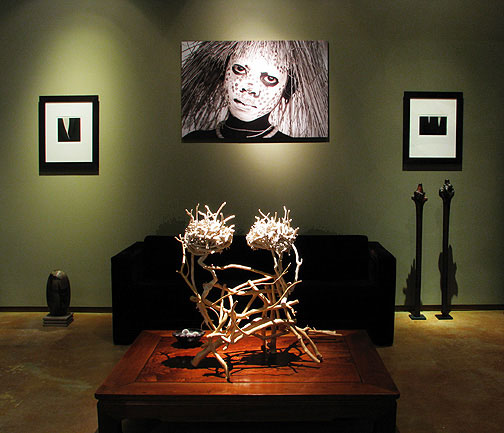
Gallery Scene Juxtaposing Contemporary, Tribal and Antiquity. (Table Sculpture) Sherry Owens- Man Brain/ Woman Brain (Photo) Boy from the Surma People of Ethiopia, Photo by Bertie Winkel
But there are so many pieces out there, it is limited. It is interesting, as you look at certain dealers like “Rossi and Rossi”, Indo-Tibetan dealers, last year at the New York Asian Art show they were showing contemporary Tibetan paintings. Nancy Weiner was also showing contemporary Asian Art. A lot of people are now starting to mix contemporary with the old and it works as long as you keep the quality consistent. I see this, all the big dealers are starting to look for other areas where they can make some money and there is money in Contemporary Art. At a certain point if you can’t get old quality pieces anymore what are you going to do, start dealing in lesser quality? You can’t go back! So people have to start looking for other areas where they can find something new and exciting. We’re going to find more and more eclectic dealers who cross over between the contemporary and the Tribal and those are the people who are going to last and do really well.
TM: Is there anything that you want people to know about you?
(Long sigh) I’m really a traveler. Pretty much I got in this business to travel and then I fell in love with the art. What’s interesting about this business are the personalities and the friendships. As a purveyor of Art it opens you up to such a variety different people and psychologies that other jobs probably wouldn’t. So, in the end the gift of the Tribal Art world is really the cast of characters that it has invited into my life and to everyone’s life. When it is all said and done, it is the value of the friendships made and the variety of friendships.
Anyone of us dealers can travel just about anywhere in the world and have a friend there, someone we can relate to. So, initially it was about the traveling, then it was about the pieces and in the end it is about the sharing and the friendships. The art is the common ground but the friendships are my biggest interest.
Tribalmania extends its sincere gratitude and appreciation to Joel Cooner for his time and insightful views.
